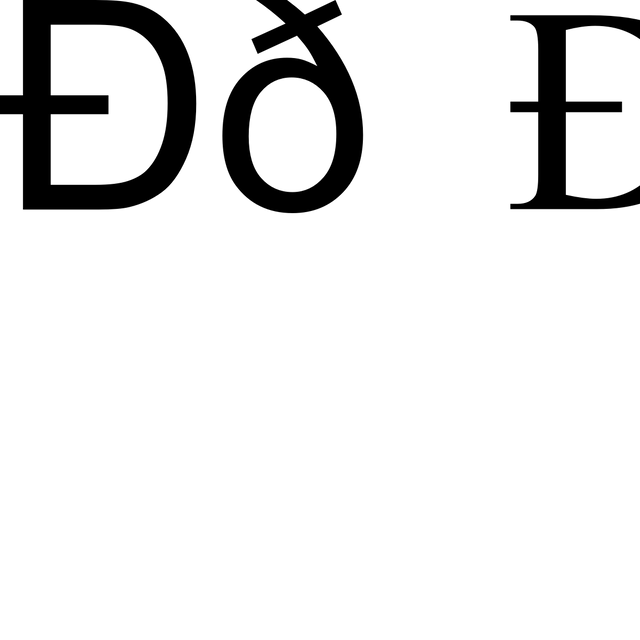Eth

Eth


A sample of Icelandic handwriting with some instances of lowercase ð clearly visible: in the words Borðum, við and niður. Also visible is a thorn in the word því.
Eth (/ɛð/, uppercase: Ð, lowercase: ð; also spelled edh or eð) is a letter used in Old English, Middle English, Icelandic, Faroese (in which it is called edd), and Elfdalian. It was also used in Scandinavia during the Middle Ages but was subsequently replaced with dh and later d. It is often transliterated as d. The lowercase version has been adopted to represent a voiced dental fricative in the International Phonetic Alphabet.
In Old English, ð (called ðæt by the Anglo-Saxons[1]) was used interchangeably with þ to represent the Old English dental fricative phoneme /θ/ or its allophone /ð/, which exist in modern English phonology as the voiced and voiceless dental fricatives now spelled "th".
Unlike the runic letter þ, ð is a modified Roman letter. ð was not found in the earliest records of Old English. A study of Mercian royal diplomas found that ð (along with đ) began to emerge in the early 8th century, with ð becoming strongly preferred by the 780s.[2] Another source indicates that the letter is "derived from Irish writing".[3]
The lowercase version has retained the curved shape of a medieval scribe's d, which d itself in general has not. ð was used throughout the Anglo-Saxon era but gradually fell out of use in Middle English, practically disappearing altogether by 1300;[4] þ survived longer, ultimately being replaced by the digraph th.
In Icelandic, ð represents a voiced dental fricative [ð], which is the same as the th in English that, but it never appears as the first letter of a word, where þ is used in its stead. The name of the letter is pronounced in isolation (and before words beginning with a voiceless consonant) as [ɛθ̠] and therefore with a voiceless rather than voiced fricative.
In Faroese, ð is not assigned to any particular phoneme and appears mostly for etymological reasons; however, it does show where most of the Faroese glides are; when ð appears before r, it is, in a few words, pronounced [ɡ]. In the Icelandic and Faroese alphabets, ð follows d.
In Olav Jakobsen Høyem's version of Nynorsk based on Trøndersk, ð was always silent and was introduced for etymological reasons.
U+1D9E ᶞ MODIFIER LETTER SMALL ETH is used in phonetic transcription.[6]
U+1D06 ᴆ LATIN LETTER SMALL CAPITAL ETH is used in the Uralic Phonetic Alphabet.[7]
Computer input
The Faroese and Icelandic keyboard layouts have a dedicated button for eth.
On Microsoft Windows, eth can be typed using the alt code Alt+(0240) for lowercase or Alt+(0208) for uppercase, or by typing AltGr+d using the US International keyboard layout.
On macOS, eth can be typed by activating the ABC Extended keyboard layout and writing ⌥ Option+D.
Using the compose key ("multi key") which is popular on Linux, eth can be typed by writing Compose D H for lowercase or Compose ⇧ Shift+D ⇧ Shift+H for uppercase.
Other
Modern uses
The letter ð is sometimes used in mathematics and engineering textbooks as a symbol for a spin-weighted partial derivative. This operator gives rise to spin-weighted spherical harmonics.
A capital eth is used as the currency symbol for Dogecoin.[9]
See also
Thorn
D with stroke
African D
Insular script